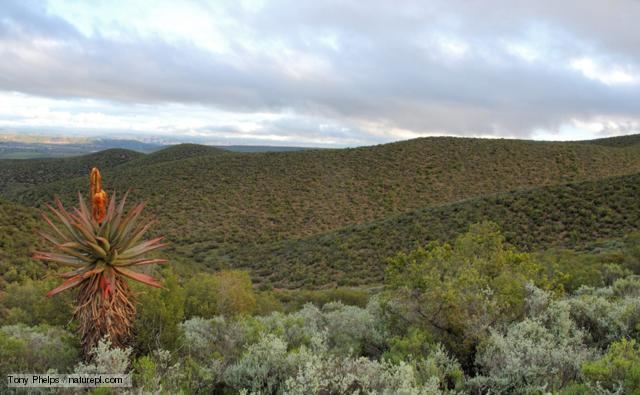 | ||
Mediterranean forests, woodlands, and scrub biome, as defined by the World Wildlife Fund, is generally characterized by dry summers and rainy winters. Summers are typically hot in low-lying inland locations but can be cool near colder seas. Winters are typically mild to cool in low-lying locations but can be cold in inland and higher locations. All these ecoregions are highly distinctive, collectively harboring 10% of the Earth's plant species.
Contents
- Mediterranean forests woodlands and scrub
- Vegetation
- Biome plant groups
- Fire as a medium of change
- Degradation
- References
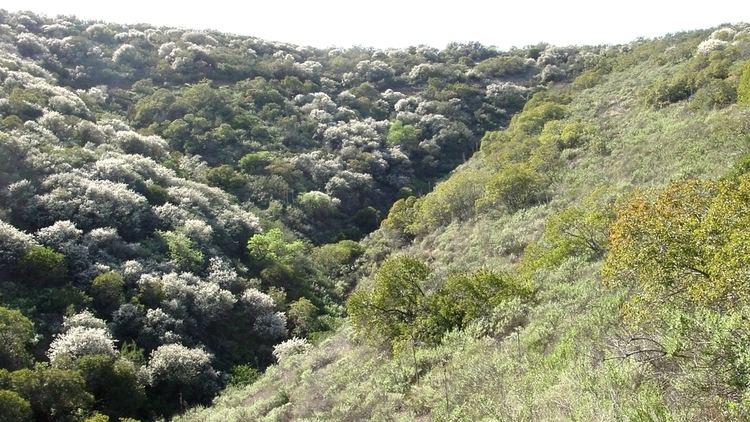
limited to, the Mediterranean climate zones, in the mid-latitudes:
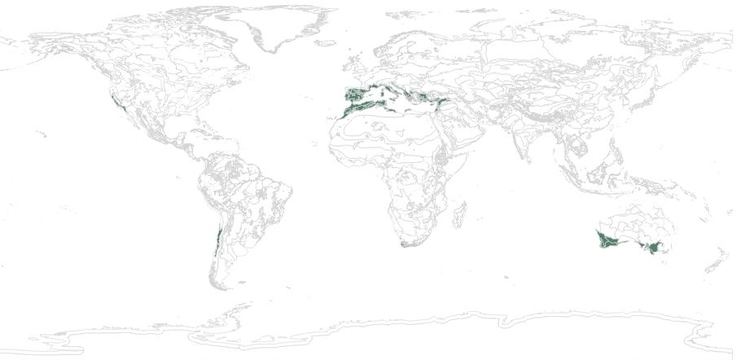
Mediterranean forests woodlands and scrub
Vegetation
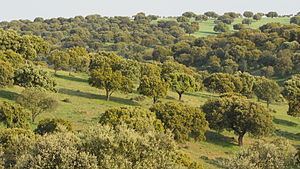
Vegetation types range from forests to woodlands, savannas, shrublands, and grasslands; "mosaic habitat" landscapes are common, where differing vegetation types are interleaved with one another in complex patterns created by variations in soil, topography, exposure to wind and sun, and fire history. Much of the woody vegetation in Mediterranean-climate regions is sclerophyll, which means 'hard-leaved' in Greek. Sclerophyll vegetation generally has small, dark leaves covered with a waxy outer layer to retain moisture in the dry summer months.
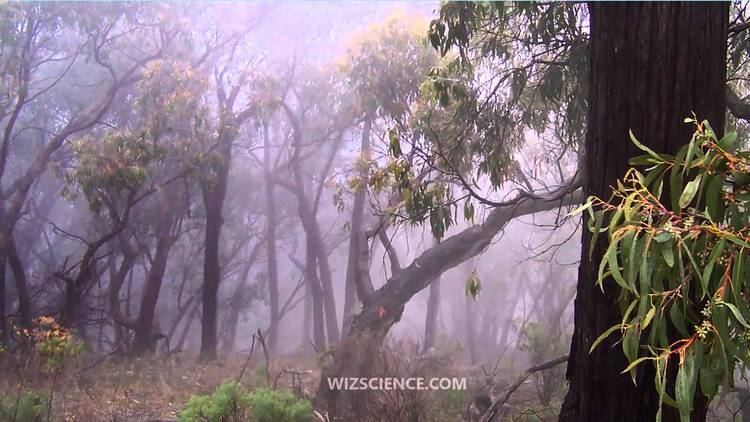
Phytogeographers consider the fynbos (South Africa) as a separate floral kingdom because 68% of the 8,600 vascular plant species crowded into its 90,000 square kilometres (35,000 sq mi) are endemic and highly distinctive at several taxonomic levels. This is equivalent to about 40% of the plant species of the United States and Canada combined, found within an area the size of the state of Maine. The fynbos and Southwest Australia shrublands have flora that are significantly more diverse than the other ecoregions, although any Mediterranean shrubland is still rich in species and endemics relative to other non-forest ecoregions.
Biome plant groups
Major plant communities in this biome include:

Fire as a medium of change
Fire, both natural and human-caused, has played a large role in shaping the ecology of Mediterranean ecoregions. The hot, dry summers make much of the region prone to fires, and lightning-caused fires occur with some frequency. Many of the plants are pyrophytes, or fire-loving, adapted or even depending on fire for reproduction, recycling of nutrients, and the removal of dead or senescent vegetation. In both the Australian and Californian Mediterranean-climate eco-regions, native peoples used fire extensively to clear brush and trees, making way for the grasses and herbaceous vegetation that supported game animals and useful plants. The plant communities in these areas adapted to the frequent human-caused fires, and pyrophyte species grew more common and more fire-loving, while plants that were poorly adapted to fire retreated. After European colonization of these regions, fires were suppressed, which has caused some unintended consequences in these ecoregions; fuel builds up, so that when fires do come they are much more devastating, and some species dependent on fire for their reproduction are now threatened. The European shrublands have also been shaped by anthropogenic fire, historically associated with transhumance herding of sheep and goats.
Degradation
Mediterranean ecoregions are some of the most endangered and vulnerable on the planet. As such, many have suffered tremendous degradation and habitat loss through logging, overgrazing, conversion to agriculture, urbanization, fire suppression, and introduction of exotic and invasive species. The ecoregions around the Mediterranean basin and in California have been particularly affected by degradation due to human activity, suffering extensive loss of forests and soil erosion, and many native plants and animals have become extinct or endangered.
